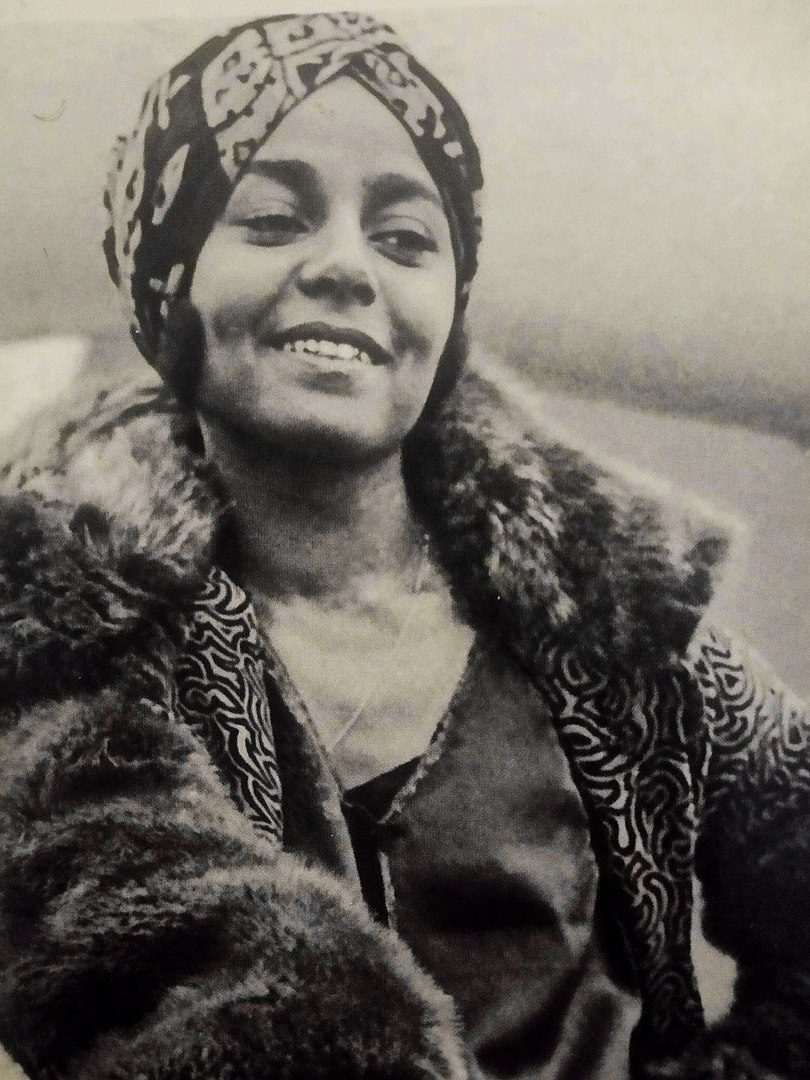10 Things to Know about Black Organized Crime in the U.S from the 1920s until now
The history of black organized crime in the United States goes back as far as the 1920s, and perhaps a bit further than that on closer inspection. Names like the Harlem numbers racket, Chicago Outfit, Madame Stephanie St.Clair, Bumpy Johnson, Black Mafia, and others mentioned in the article are just but a few notable marks of the rise of illegal, organized activity in America in the early 20th Century. Cities such as Chicago, Philadelphia, and Detroit received a significant number of black people during the Great Migration, and would soon become some of the most notorious crime-filled cities.
Numerous factors have often been cited as contributors to the rise of black organized crime. These include economic disparity, unemployment, poverty, and the resultant desire to acquire a better life at any cost. It’s hard to point to one specific definitive cause. Nonetheless, these events remain a critical part of history. Here are the 10 things to know about Black organized crime from the 1920s until now.
1. Millions of African Americans moved from the rural South to cities during the Great Migration

“Scott and Violet Arthur arrive with their family at Chicago’s Polk Street Depot on Aug. 30, 1920, two months after their two sons were lynched in Paris, Texas. The picture has become an iconic symbol of the Great Migration. (Chicago History Museum). Wikimedia Commons.
Considered one of the largest in American history, the Great Migration (1910-1970) saw the movement of approximately six million African Americans from the rural South to cities in the North and Midwest. Several factors played a role in this, including the increased demand for industrial labor in the cities during World War I, and the deeply rooted, legalized racism in the South. The latter had enacted the repressive Jim Crow segregationist laws, and historians have alluded that Blacks were also fleeing from this. Although racism was not legalized in the North, it was still prevalent in daily interactions. Settlement in cities amidst all these difficulties set the stage for the emergence of organized crime in the search for a better life.
2. The Prohibition era contributed to the rise of illegal activity

Labor unions hold anti-prohibition meeting Chicago 1920s. Wikimedia Commons.
A prohibitionist movement rose in the early 19th century, and at the center of this was a call to illegalize alcohol. Prohibitionists, led by pietistic Protestants believed that it was critical to salvaging a society ridden with alcohol-related problems. In 1919, the 18th amendment was passed, and the Volstead Act was enacted, effectively banning alcoholic drinks. From 1920 until its repeal in 1933, the policy was in effect. Interestingly, however, illegal production and sale of alcohol thrived during that period.
People still wanted to take alcohol, the prohibition notwithstanding. This demand created fertile ground for bootlegging, which is the smuggling of alcohol, and speakeasies, which were illegal businesses dealing with alcohol. The Blacks equally engaged in these lucrative activities. They were however just the beginning of the rise of more complex, organized crime groups that would diversify illegal activities.
3. Organized crime groups soon emerged in major cities
The cities of New York, Chicago, and Philadelphia received a significant increase in the Black population. Segregation persisted in most neighborhoods, creating tightly-knit Black communities. In Harlem, New York, for example, the settlement of Blacks and the moving away of a good number of whites effectively made the area a Black community neighborhood. Soon enough, illegal gambling, in addition to bootlegging and speakeasies became a means of earning a livelihood. Organized crime groups, consequently emerged.
Have a look at the 10 Most Notorious New York Gangsters.
4. The numbers racket became popular among Black and Italian communities
The numbers game was a type of illegal gambling in which players would select three random digits and winning would depend on whether the digits matched those randomly drawn the next day. It spread like wildfire in the early 1920s and 1930s, especially among relatively poor neighborhoods. Enterprises running the numbers rackets emerged in major cities such as Chicago, New York, and Detroit. In New York, Harlem, which had become one of the most African American populated areas, was the hub of the numbers racket. It goes without saying that those in charge of the game included Blacks, with some of the big names being Stephanie St. Clair and Ellsworth ‘Bumpy’ Johnson.
5. The Harlem numbers racket was one of the biggest Black organized illegal enterprises

Stephanie St. Clair by Arienechang. Wikimedia Commons.
There were about thirty policy banks in Harlem by 1925, as recorded in Francis A. Ianni’s book, ‘Black Mafia: Ethnic Succession in Organized Crime. Independent policy bankers such as Stephanie St. Clair (Queen of the Policy Rackets) and Casper Holstein largely oversaw the running of the numbers rackets in Harlem. St. Clair is considered one of the most successful numbers game operators in Harlem at the time, and her resilience against Mafia control is notable. She ran a number of those, and the Harlem numbers racket was one of the most successful Black organized illegal enterprises.
10 Things you didn’t Know about Harlem Gangs and Gangsters.
6. Forms of crime diversified in the 1960s

Image by Tom Def-Unsplash.
The emergence of gangs such as the Black Mafia in Philadelphia followed the expansion of illegal activity into drug trafficking, extortion, and prostitution. This was during the early 1960s, and the drug trade was booming. The use of intimidation and violence to instill fear and compliance by extortionist groups became the norm.
7. The crack epidemic led to an increase in violent gangs

Image by Renoberanger-Pixabay.
A heroin epidemic in the 1970s saw the rise of gangs who dealt in the illegal smuggling and trafficking of the drug. At the same time, the rivalry between gangs fighting for control over territories intensified. Gangs like Crips and Bloods were known for their ruthless manner of operation, and violence associated with the drug trade.
8. Narcotic empires grew massively in the 1970s

Wanted poster for Frank Matthews by DEA. Wikimedia Commons.
Black drug lords and kingpins such as Frank Matthews (Black Caesar) and Frank Lucas rose quickly from the criminal underworld, establishing million-dollar drug empires. The level of organization was not only large-scale but also impressively coordinated across and within borders. Numerous black youths worked in these rings for the drug lords, and equally, many were trapped in drug abuse as well.
Read more on: 10 Most Famous Black Gangsters of all time.
9. The Black Mafia was one of the most notorious gangs in Philadelphia
This was one of the biggest crime syndicates involved in drug trafficking in Philadelphia. At its peak in the 1970s, its operations cut across South Jersey, Chester, Delaware, and Wilmington. It was involved in drug trafficking, particularly heroin, armed robbery, extortion, prostitution, racketeering, gambling, and other illegal activities. Its alleged founder, Samuel Christian, was a former Black Panther Party member. The gang used violence and intimidation to prevent people from reporting its activities to the police.
It is recorded to have carried out over 40 murders and other infamous crimes. One of the most infamous, well-known acts of violence by the Black Mafia is the 1973 Hanafi Muslim Massacre, in which the gang murdered 7 Sunni Muslims, 5 of whom were children. At the time, the mafia was affiliated with the Nation of Islam, and the target of the attack was Hamaas Abdul, who had called their leader, Elijah Muhammad, a false prophet.
10 Notorious Gangsters and Gangs that operated in Los Angeles.
10. Law enforcement officers have often been accused of racial profiling and unwarranted violence in combating crime
Major crackdowns by law enforcement officers have been undertaken over the years in a bid to terminate the operation of organized criminal cartels and gangsters. Some of the approaches taken such as the use of intense violence and procedures taken in combating black organized crime have been marred with controversy. Issues such as racial profiling, and the incarceration of innocent black youths in such crackdowns have been a persistent concern to date. However, black organized crime has relatively reduced over the years as compared to its emergence in the early 19th century.
Planning a trip to Paris ? Get ready !
These are Amazon’s best-selling travel products that you may need for coming to Paris.
Bookstore
- The best travel book : Rick Steves – Paris 2023 – Learn more here
- Fodor’s Paris 2024 – Learn more here
Travel Gear
- Venture Pal Lightweight Backpack – Learn more here
- Samsonite Winfield 2 28″ Luggage – Learn more here
- Swig Savvy’s Stainless Steel Insulated Water Bottle – Learn more here
Check Amazon’s best-seller list for the most popular travel accessories. We sometimes read this list just to find out what new travel products people are buying.










